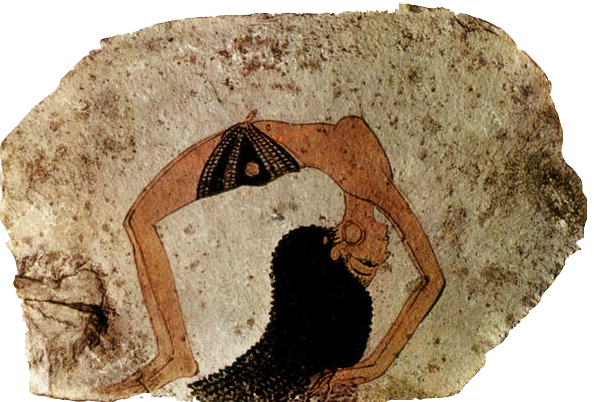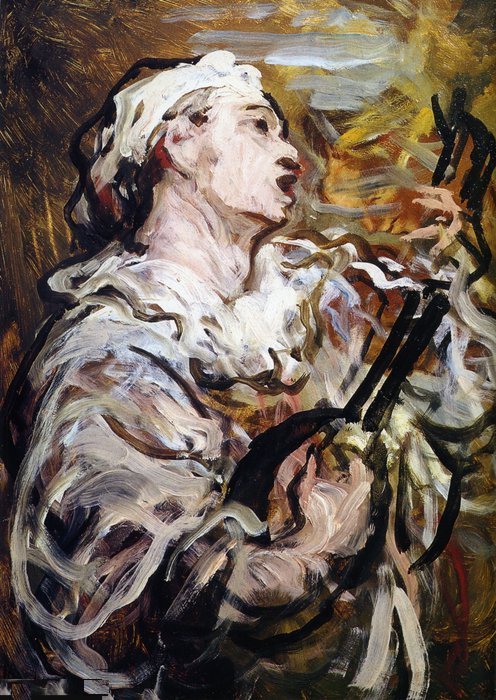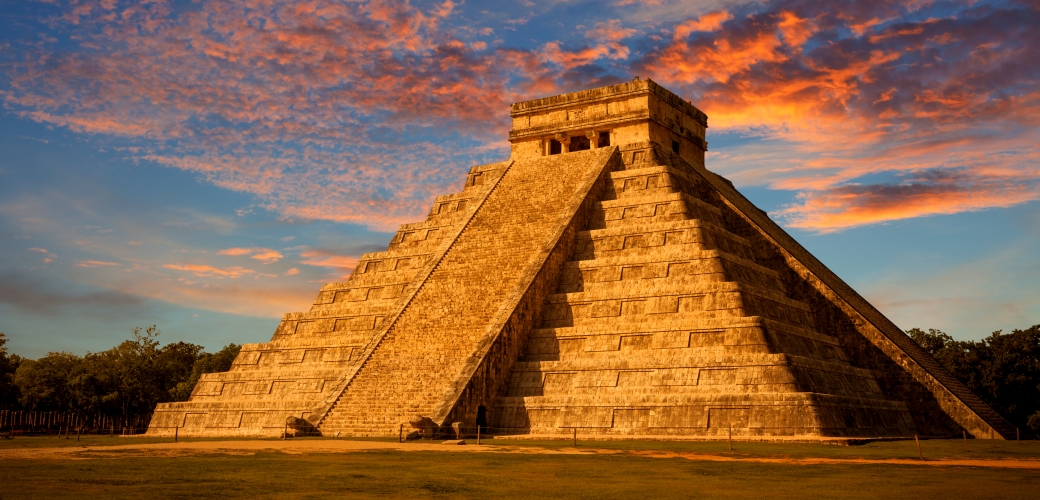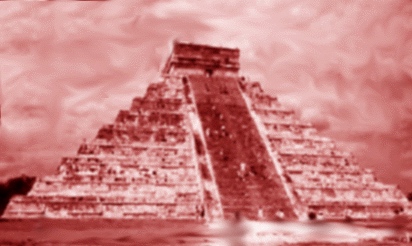Postmodernism
does not matter!

Ray and Maria Stata Center (2004), designed by the Canadian-American
architect Frank Gehry for the Massachusetts Institute of Technology
(MIT), Cambridge, Massachusetts.
ポストモダニズムなんか、たいしたことない
Postmodernism
does not matter!

Ray and Maria Stata Center (2004), designed by the Canadian-American
architect Frank Gehry for the Massachusetts Institute of Technology
(MIT), Cambridge, Massachusetts.
かいせつ 池田光穂
ポストモダンとは、「モダン(近 代)の後」に来るという時間と時代区分 と、それを支える思潮・思想のことを言う。だが、それらはプレとポストの連辞符修飾語であるモダニズムを不可欠とする。つまりポストモダンとは、モダンと いう時間概念を必要として、それとの空間的断絶を含む〈距離〉をとらない限り、理解不能なジャンクである。つまり、ポストモダンとポストモダニズムは、モ ダンという時間性が産んだ〈幻影〉である。ポストモダン人類学は、モ ダンを支えてい た思潮・思想の批判や分析をもとに、ポストモダンという時代と思潮が、人間を具体的にどのように捉えようとしていたのかを、人類学の研究方法論をとおして 明らかにする研究である(→「ポストモダン人類学」「ポストモダニズム」)。
英語における最も早いポストモダンという用語の初出は、建築用語として 1949年である。しかし、社会 思想の用語としてはトインビー『宗教への歴史家のアプローチ』(1956)やライト・ミルズ『社会学的想像 力』(1959)である。特に後者は、現在が過去のものになるという時代と概念区分の到来を 意味する用語としてポストモダンを用いている("Just as Antiquity was followed by several centuries of Oriental ascendancy... so now the Modern Age is being succeeded by a post-modern period. Perhaps we may call it: The Fourth Epoch.")。この後は、左翼文芸批評誌などの文芸ジャンルとしてこの用語が徐々に用いられるようになる[OEDの"post-modern"参 照]。
Postmodern,
Subsequent to, or later than, what is ‘modern’; spec. in the arts, esp.
Archit., applied to a movement in reaction against that designated
‘modern’ (cf. modern a. 2 h). Hence post-ˈmodernism, post-ˈmodernist a.
and n.
1949
J. Hudnut Archit. & Spirit of Man ix. 108
(heading) Post-modern house. Ibid. 119 He shall be a
modern owner, a
post-modern owner, if such a thing is conceivable. Free from all
sentimentality or fantasy or caprice. 1956 A. Toynbee
Historian's
Approach to Relig. ii. xi. 146 Our post-Modern Age of Western history.
1959 C. W. Mills Sociol. Imagination ix. 166 Just as
Antiquity was
followed by several centuries of Oriental ascendancy‥so now the Modern
Age is being succeeded by a post-modern period. Perhaps we may call it:
The Fourth Epoch. 1965 L. A. Fiedler in Partisan Rev.
XXXII. 508, I
am not now interested in analyzing‥the diction and imagery which have
passed from Science Fiction into post-Modernist literature.
Postmodern music does not matter!!!(ポストモダン音楽など、たいしたことないよ!!)
| Postmodernism is an
intellectual stance or mode of discourse[1][2] characterized by
skepticism toward the "grand narratives" of modernism; rejection of
epistemic (scientific) certainty or the stability of meaning; and
sensitivity to the role of ideology in maintaining political
power.[3][4] Claims to objectivity are dismissed as naïve realism,[5]
with attention drawn to the conditional nature of knowledge claims
within particular historical, political, and cultural discourses.[4]
The postmodern outlook is characterized by self-referentiality,
epistemological relativism, moral relativism, pluralism, irony,
irreverence, and eclecticism;[4] it rejects the "universal validity" of
binary oppositions, stable identity, hierarchy, and
categorization.[6][7] Initially emerging from a mode of literary criticism, postmodernism developed in the mid-twentieth century as a rejection of modernism,[8][9][10] and has been observed across many disciplines.[11][12] Postmodernism is associated with the disciplines deconstruction and post-structuralism.[4] Various authors have criticized postmodernism as promoting obscurantism, as abandoning Enlightenment, rationalism and scientific rigor, and as adding nothing to analytical or empirical knowledge.[13] |
ポストモダニズムとは、モダニズムの「グランド・ナラティブ」に対する
懐疑、認識論的(科学的)確実性や意味の安定性の拒絶、政治権力の維持におけるイデオロギーの役割に対する敏感さによって特徴づけられる知的スタンスや言
説の様式[1][2]である。
[3][4]客観性に対する主張はナイーブなリアリズムとして退けられ[5]、特定の歴史的、政治的、文化的な言説の中での知識の主張の条件付きの性質に
注意が向けられる[4]。
ポストモダンの展望は、自己言及性、認識論的相対主義、道徳的相対主義、多元主義、皮肉、不遜、折衷主義によって特徴づけられる[4]。それは二項対立、
安定したアイデンティティ、ヒエラルキー、カテゴライゼーションの「普遍的妥当性」を否定するものである[6][7]。 当初は文芸批評の一形態として登場したポストモダニズムは、20世紀半ばにモダニズムの否定として発展し、多くの学問分野で見られるようになった。ポスト モダニズムは、脱構築やポスト構造主義といった学問分野と関連している。さまざまな著者が、ポストモダニズムは蒙昧主義を助長するものであり、啓蒙主義や 合理主義、科学的厳密性を放棄するものであり、分析的・経験的知識には何の足しにもならないと批判している。 |
| Definition Postmodernism is an intellectual stance or mode of discourse[1][2] which challenges worldviews associated with Enlightenment rationality dating back to the 17th century.[4] Postmodernism is associated with relativism and a focus on the role of ideology in the maintenance of economic and political power.[4] Postmodernists are "skeptical of explanations which claim to be valid for all groups, cultures, traditions, or races, and instead focuses on the relative truths of each person".[14] It considers "reality" to be a mental construct.[14] Postmodernism rejects the possibility of unmediated reality or objectively-rational knowledge, asserting that all interpretations are contingent on the perspective from which they are made;[5] claims to objective fact are dismissed as naive realism.[4] Postmodern thinkers frequently describe knowledge claims and value systems as contingent or socially-conditioned, describing them as products of political, historical, or cultural discourses[15] and hierarchies.[4] Accordingly, postmodern thought is broadly characterized by tendencies to self-referentiality, epistemological and moral relativism, pluralism, and irreverence.[4] Postmodernism is often associated with schools of thought such as deconstruction and post-structuralism.[4] Postmodernism relies on critical theory, which considers the effects of ideology, society, and history on culture.[16] Postmodernism and critical theory commonly criticize universalist ideas of objective reality, morality, truth, human nature, reason, language, and social progress.[4] Initially, postmodernism was a mode of discourse on literature and literary criticism, commenting on the nature of literary text, meaning, author and reader, writing, and reading.[17] Postmodernism developed in the mid- to late-twentieth century across many scholarly disciplines as a departure or rejection of modernism.[18][9][10] As a critical practice, postmodernism employs concepts such as hyperreality, simulacrum, trace, and difference, and rejects abstract principles in favor of direct experience.[citation needed] |
定義 ポストモダニズムとは、17世紀に遡る啓蒙主義的合理性に関連する世界観に異議を唱える知的姿勢や言説の様式のことである。ポストモダニズムは、相対主義 や、経済的・政治的権力の維持におけるイデオロギーの役割に焦点を当てることと関連している。ポストモダニストは「すべての集団、文化、伝統、人種に有効 であると主張する説明に懐疑的であり、その代わりに各人の相対的真実に焦点を当てる」。現実」とは精神的な構築物であると考える。ポストモダニズムは、媒 介されない現実や客観的に合理的な知識の可能性を否定し、すべての解釈は、それがなされる視点に依存していると主張する。 ポストモダンの思想家は、知識の主張や価値体系を偶発的あるいは社会的に条件づけられたものとして記述することが多く、政治的、歴史的、文化的な言説やヒ エラルキーの産物であると表現する。したがって、ポストモダンの思想は、自己言及性、認識論的・道徳的相対主義、多元主義、不遜への傾向によって大まかに 特徴づけられる。ポストモダニズムはしばしば、脱構築やポスト構造主義といった学派と結びついている。ポストモダニズムは、イデオロギー、社会、歴史が文 化に及ぼす影響を考察する批判理論に依拠している。ポストモダニズムと批評理論は、客観的現実、道徳、真理、人間性、理性、言語、社会的進歩といった普遍 主義的な考え方を批判するのが一般的である。 当初、ポストモダニズムは文学や文学批評に関する言説の一様式であり、文学テクスト、意味、作者と読者、書くこと、読むことの本質について論評していた。 ポストモダニズムは20世紀半ばから後半にかけて、モダニズムからの離脱や拒絶として、多くの学問分野にわたって発展した。批評的実践として、ポストモダ ニズムは超現実、シミュラクルム、痕跡、差異といった概念を用い、直接的な経験を優先して抽象的な原理を否定する。 |
| Origins of term The term postmodern was first used in 1870.[19] John Watkins Chapman suggested "a Postmodern style of painting" as a way to depart from French Impressionism.[20] J. M. Thompson, in his 1914 article in The Hibbert Journal (a quarterly philosophical review), used it to describe changes in attitudes and beliefs in the critique of religion, writing: "The raison d'être of Post-Modernism is to escape from the double-mindedness of Modernism by being thorough in its criticism by extending it to religion as well as theology, to Catholic feeling as well as to Catholic tradition."[21] In 1942 H. R. Hays described postmodernism as a new literary form.[citation needed] In 1926, Bernard Iddings Bell, president of St. Stephen's College (now Bard College), published Postmodernism and Other Essays, marking the first use of the term to describe the historical period following Modernity.[22][23] The essay criticizes the lingering socio-cultural norms, attitudes, and practices of the Age of Enlightenment. It also forecasts the major cultural shifts toward Postmodernity and (Bell being an Anglican Episcopal priest[24][25]) suggests orthodox religion as a solution.[26] However, the term postmodernity was first used as a general theory for a historical movement in 1939 by Arnold J. Toynbee: "Our own Post-Modern Age has been inaugurated by the general war of 1914–1918".[27] Portland Building (1982), by architect Michael Graves, an example of Postmodern architecture In 1949 the term was used to describe a dissatisfaction with modern architecture and led to the postmodern architecture movement[28] in response to the modernist architectural movement known as the International Style. Postmodernism in architecture was initially marked by a re-emergence of surface ornament, reference to surrounding buildings in urban settings, historical reference in decorative forms (eclecticism), and non-orthogonal angles.[29] Author Peter Drucker suggested the transformation into a post-modern world that happened between 1937 and 1957 and described it as a "nameless era" characterized as a shift to a conceptual world based on pattern, purpose, and process rather than a mechanical cause. This shift was outlined by four new realities: the emergence of an Educated Society, the importance of international development, the decline of the nation-state, and the collapse of the viability of non-Western cultures.[30] In 1971, in a lecture delivered at the Institute of Contemporary Art, London, Mel Bochner described "post-modernism" in art as having started with Jasper Johns, "who first rejected sense-data and the singular point-of-view as the basis for his art, and treated art as a critical investigation".[31] In 1996, Walter Truett Anderson described postmodernism as belonging to one of four typological world views which he identified as: Neo-romantic, in which truth is found through attaining harmony with nature or spiritual exploration of the inner self.[32] Postmodern-ironist, which sees truth as socially constructed. Scientific-rational, in which truth is defined through methodical, disciplined inquiry. Social-traditional, in which truth is found in the heritage of American and Western civilization. |
用語の起源 ジョン・ワトキンズ・チャップマンは、フランス印象派から脱却する方法として「ポストモダンの絵画様式」を提案した[20]。 J・M・トンプソンは、1914年に『ヒバート・ジャーナル』(季刊の哲学評論)に寄稿した論文で、宗教批評における態度や信念の変化を表現するために使 用し、次のように書いている: 「ポスト・モダニズムの存在意義は、神学だけでなく宗教にも、カトリックの伝統だけでなくカトリックの感情にも批判を拡張することによって、その批判を徹 底することによって、モダニズムの二重思考から逃れることである」[21]。 1942年、H.R.ヘイズはポストモダニズムを新しい文学形式と表現した[要出典]。 1926年、セント・ステファンズ・カレッジ(現バード大学)の学長であったバーナード・イドイングス・ベルは『ポストモダニズムとその他のエッセイ』を 出版し、モダニティの後の歴史的な時期を表す言葉として初めて使用された。また、ポストモダンへの文化的な大きなシフトを予測し、(ベルは英国国教会の司 教であり[24][25])解決策として正統派の宗教を提案している[26]。しかし、ポストモダンという用語は1939年にアーノルド・J・トインビー によって歴史的な動きに対する一般的な理論として初めて使用された。 ポストモダン建築の一例である建築家マイケル・グレイヴスによるポートランド・ビルディング(1982年 1949年、この言葉は近代建築に対する不満を表すために使われ、インターナショナル・スタイルとして知られるモダニズム建築運動に対するポストモダン建 築運動[28]につながった。建築におけるポストモダニズムは当初、表面装飾の再出現、都市環境における周囲の建物への言及、装飾形態における歴史的参照 (折衷主義)、非直交角度が特徴的であった[29]。 作家のピーター・ドラッカーは、1937年から1957年の間に起こったポストモダン世界への変容を示唆し、それを機械的な原因ではなく、パターン、目 的、プロセスに基づく概念的世界へのシフトとして特徴づけられる「名もなき時代」と表現した。このシフトは4つの新しい現実によって概説されていた:教養 ある社会の出現、国際開発の重要性、国民国家の衰退、非西洋文化の存続可能性の崩壊であった[30]。 1971年、メル・ボッチナーはロンドンのインスティテュート・オブ・コンテンポラリー・アートで行った講義の中で、美術における「ポストモダニズム」は ジャスパー・ジョーンズから始まったと述べている。 1996年、ウォルター・トゥルーエット・アンダーソンは、ポストモダニズムを4つの類型的な世界観のうちの1つに属すると説明した: ネオ・ロマン主義とは、自然との調和や自己の内面の精神的探求を通じて真理を見出すものである[32]。 ポストモダン-アイロニスト:真理は社会的に構築されたものとみなす。 科学的-合理的:真理は理路整然とした規律ある探究によって定義される。 社会的-伝統的、真理はアメリカや西洋文明の遺産の中に見出される。 |
| Structuralism and
post-structuralism Structuralism was a philosophical movement developed by French academics in the 1950s, partly in response to French existentialism,[43] and often interpreted in relation to modernism and high modernism. Thinkers who have been called "structuralists" include the anthropologist Claude Lévi-Strauss, the linguist Ferdinand de Saussure, the Marxist philosopher Louis Althusser, and the semiotician Algirdas Greimas. The early writings of the psychoanalyst Jacques Lacan and the literary theorist Roland Barthes have also been called "structuralist". Those who began as structuralists but became post-structuralists include Michel Foucault, Roland Barthes, Jean Baudrillard, and Gilles Deleuze. Other post-structuralists include Jacques Derrida, Pierre Bourdieu, Jean-François Lyotard, Julia Kristeva, Anthony Giddens, Hélène Cixous, and Luce Irigaray. The American cultural theorists, critics, and intellectuals whom they influenced include Judith Butler, John Fiske, Rosalind Krauss, Avital Ronell, and Hayden White. Like structuralists, post-structuralists start from the assumption that people's identities, values, and economic conditions determine each other rather than having intrinsic properties that can be understood in isolation.[44] Thus the French structuralists considered themselves to be espousing relativism and constructionism. But they nevertheless tended to explore how the subjects of their study might be described, reductively, as a set of essential relationships, schematics, or mathematical symbols. (An example is Claude Lévi-Strauss's algebraic formulation of mythological transformation in "The Structural Study of Myth").[45] Postmodernism entails reconsideration of the entire Western value system (love, marriage, popular culture, shift from an industrial to a service economy) that took place since the 1950s and 1960s, with a peak in the Social Revolution of 1968—are described with the term postmodernity,[46] as opposed to postmodernism, a term referring to an opinion or movement.[47] Post-structuralism is characterized by new ways of thinking through structuralism, contrary to the original form.[48] |
構造主義とポスト構造主義 構造主義とは、1950年代にフランスの学者たちによって展開された哲学運動であり、一部はフランスの実存主義に対抗するものであった[43]。構造主義 者」と呼ばれる思想家には、人類学者のクロード・レヴィ=ストロース、言語学者のフェルディナン・ド・ソシュール、マルクス主義哲学者のルイ・アルチュ セール、記号論者のアルギルダス・グレイマスなどがいる。精神分析学者ジャック・ラカンや文学理論家ロラン・バルトの初期の著作も「構造主義者」と呼ばれ ている。構造主義者として出発し、ポスト構造主義者となった人々には、ミシェル・フーコー、ロラン・バルト、ジャン・ボードリヤール、ジル・ドゥルーズな どがいる。その他のポスト構造主義者には、ジャック・デリダ、ピエール・ブルデュー、ジャン=フランソワ・リオタール、ジュリア・クリステヴァ、アンソ ニー・ギデンス、エレーヌ・シクス、ルーチェ・イリガライなどがいる。彼らが影響を受けたアメリカの文化理論家、批評家、知識人には、ジュディス・バト ラー、ジョン・フィスク、ロザリンド・クラウス、アヴィタル・ロネル、ヘイデン・ホワイトらがいる。 構造主義者と同様に、ポスト構造主義者は、人々のアイデンティティ、価値観、経済状況は、単独で理解できる本質的な性質を持っているのではなく、互いに決 定し合っているという仮定から出発している。しかし、それにもかかわらず、彼らは自分たちの研究対象がいかに還元的に、本質的な関係、図式、数学的記号の 集合として記述されうるかを探求する傾向があった。(例えば、クロード・レヴィ=ストロースは『神話の構造的研究』において神話的変容を代数的に定式化し ている)[45]。 ポストモダニズムは、1968年の社会革命をピークとして1950年代から1960年代にかけて起こった西洋の価値体系全体(恋愛、結婚、大衆文化、産業 経済からサービス経済へのシフト)の再考を伴うものであり、意見や運動を指すポストモダニズムとは対照的に、ポストモダニティという用語で表現される [46]。 |
| Deconstruction One of the most well-known postmodernist concerns is deconstruction, a theory for philosophy, literary criticism, and textual analysis developed by Jacques Derrida.[49] Critics have insisted that Derrida's work is rooted in a statement found in Of Grammatology: "Il n'y a pas de hors-texte" ('there is nothing outside the text'). Such critics misinterpret the statement as denying any reality outside of books. The statement is actually part of a critique of "inside" and "outside" metaphors when referring to the text, and is a corollary to the observation that there is no "inside" of a text as well.[50] This attention to a text's unacknowledged reliance on metaphors and figures embedded within its discourse is characteristic of Derrida's approach. Derrida's method sometimes involves demonstrating that a given philosophical discourse depends on binary oppositions or excluding terms that the discourse itself has declared to be irrelevant or inapplicable. Derrida's philosophy inspired a postmodern movement called deconstructivism among architects, characterized by a design that rejects structural "centers" and encourages decentralized play among its elements. Derrida discontinued his involvement with the movement after the publication of his collaborative project with architect Peter Eisenman in Chora L Works: Jacques Derrida and Peter Eisenman.[51] |
脱構築 ポストモダニズムの最もよく知られた関心事のひとつは脱構築であり、ジャック・デリダによって展開された哲学、文芸批評、テクスト分析のための理論である [49]。批評家たちは、デリダの仕事は『文法学論考』にある記述に根ざしていると主張してきた: 「Il n'y a pas de hors-texte」(テクストの外には何もない)。このような批評家は、この声明を、書物の外にある現実を否定していると誤解している。この発言は実 際には、テクストに言及する際の「内側」と「外側」のメタファーに対する批判の一部であり、同様にテクストの「内側」は存在しないという観察に付随するも のである[50]。このようにテクストがその言説の中に埋め込まれたメタファーや図式に無自覚に依存していることに注意を払うことは、デリダのアプローチ の特徴である。デリダの方法には、ある哲学的言説が二項対立に依存していることを示したり、言説自体が無関係あるいは適用不可能であると宣言している用語 を除外したりすることも含まれる。デリダの哲学は、建築家の間で脱構築主義(deconstructivism)と呼ばれるポストモダンのムーブメントに 影響を与え、構造的な「中心」を否定し、要素間の分散的な遊びを奨励するデザインを特徴としている。デリダは、建築家ピーター・アイゼンマンとの共同プロ ジェクト『チョラL・ワークス』を発表した後、この運動との関わりを断っている: ジャック・デリダとピーター・アイゼンマン[51]。 |
| Post-postmodernism The connection between postmodernism, posthumanism, and cyborgism has led to a challenge to postmodernism, for which the terms Post-postmodernism and postpoststructuralism were first coined in 2003:[52][53] In some sense, we may regard postmodernism, posthumanism, poststructuralism, etc., as being of the 'cyborg age' of mind over body. Deconference was an exploration in post-cyborgism (i.e. what comes after the postcorporeal era), and thus explored issues of postpostmodernism, postpoststructuralism, and the like. To understand this transition from 'pomo' (cyborgism) to 'popo' (postcyborgism) we must first understand the cyborg era itself.[54] More recently metamodernism, post-postmodernism and the "death of postmodernism" have been widely debated: in 2007 Andrew Hoberek noted in his introduction to a special issue of the journal Twentieth-Century Literature titled "After Postmodernism" that "declarations of postmodernism's demise have become a critical commonplace". A small group of critics has put forth a range of theories that aim to describe culture or society in the alleged aftermath of postmodernism, most notably Raoul Eshelman (performatism), Gilles Lipovetsky (hypermodernity), Nicolas Bourriaud (altermodern), and Alan Kirby (digimodernism, formerly called pseudo-modernism). None of these new theories or labels have so far gained very widespread acceptance. Sociocultural anthropologist Nina Müller-Schwarze offers neostructuralism as a possible direction.[55] The exhibition Postmodernism – Style and Subversion 1970–1990 at the Victoria and Albert Museum (London, 24 September 2011 – 15 January 2012) was billed as the first show to document postmodernism as a historical movement. |
ポスト・ポストモダニズム ポストモダニズム、ポストヒューマニズム、そしてサイボーグ主義との結びつきは、ポストモダニズムへの挑戦につながっており、そのためにポスト・ポストモ ダニズムとポスト構造主義という言葉が2003年に初めて作られた:[52][53]。 ある意味では、ポストモダニズム、ポストヒューマニズム、ポスト構造主義などは、身体よりも心という「サイボーグの時代」のものであるとみなすことができ るかもしれない。デコンファレンスは、ポスト・サイボーグ主義(すなわち、ポスト肉体の時代の後に来るもの)の探求であり、したがってポスト・ポストモダ ニズム、ポスト・ポスト構造主義などの問題を探求した。この「ポモ」(サイボーグ主義)から「ポポ」(ポストサイボーグ主義)への移行を理解するために は、まずサイボーグの時代そのものを理解しなければならない[54]。 より最近では、メタモダニズム、ポスト・ポストモダニズム、そして「ポストモダニズムの死」が広く議論されている。2007年、アンドリュー・ホベレック は「ポストモダニズムの後」と題された『20世紀文学』誌の特集号の序文で、「ポストモダニズムの終焉の宣言は批評家にとってありふれたものとなった」と 述べている。少数の批評家グループは、ポストモダニズムの余波を受けたとされる文化や社会を記述することを目的とした様々な理論を提唱しており、特にラウ ル・エシェルマン(パフォーマティズム)、ジル・リポヴェツキー(ハイパーモダニティ)、ニコラ・ブルロー(アルテルモダン)、アラン・カービー(デジモ ダニズム、以前は擬似モダニズムと呼ばれていた)などが有名である。これらの新しい理論やレッテルはいずれも、今のところあまり広く受け入れられてはいな い。社会文化人類学者のニーナ・ミュラー=シュヴァルツェは、可能性のある方向性として新構造主義を提唱している[55]。ヴィクトリア・アンド・アル バート博物館(ロンドン、2011年9月24日~2012年1月15日)で開催された「ポストモダニズム-スタイルと破壊1970-1990」展は、歴史 的な運動としてのポストモダニズムを記録した初の展覧会と銘打たれていた。 |
| Postmodern philosophy In the 1970s a group of poststructuralists in France developed a radical critique of modern philosophy with roots discernible in Nietzsche, Kierkegaard, and Heidegger, and became known as postmodern theorists, notably including Jacques Derrida, Michel Foucault, Jean-François Lyotard, Jean Baudrillard, and others. New and challenging modes of thought and writing pushed the development of new areas and topics in philosophy. By the 1980s, this spread to America (Richard Rorty) and the world.[56] Jacques Derrida Jacques Derrida was a French-Algerian philosopher best known for developing a form of semiotic analysis known as deconstruction, which he discussed in numerous texts, and developed in the context of phenomenology.[57][58][59] He is one of the major figures associated with post-structuralism and postmodern philosophy.[60][61][62] Derrida re-examined the fundamentals of writing and its consequences on philosophy in general; sought to undermine the language of "presence" or metaphysics in an analytical technique which, beginning as a point of departure from Heidegger's notion of Destruktion, came to be known as deconstruction.[63] Michel Foucault Michel Foucault was a French philosopher, historian of ideas, social theorist, and literary critic. First associated with structuralism, Foucault created an oeuvre that today is seen as belonging to post-structuralism and to postmodern philosophy[citation needed]. Considered a leading figure of French theory [fr], his work remains fruitful in the English-speaking academic world in a large number of sub-disciplines. The Times Higher Education Guide described him in 2009 as the most cited author in the humanities.[64] Michel Foucault introduced concepts such as discursive regime, or re-invoked those of older philosophers like episteme and genealogy in order to explain the relationship between meaning, power, and social behavior within social orders (see The Order of Things, The Archaeology of Knowledge, Discipline and Punish, and The History of Sexuality).[65] Jean-François Lyotard Influenced by Nietzsche,[66] Jean-François Lyotard is credited with being the first to use the term in a philosophical context, in his 1979 work The Postmodern Condition: A Report on Knowledge. In it, he follows Wittgenstein's language games model and speech act theory, contrasting two different language games, that of the expert, and that of the philosopher. He talks about the transformation of knowledge into information in the computer age and likens the transmission or reception of coded messages (information) to a position within a language game.[3] Lyotard defined philosophical postmodernism in The Postmodern Condition, writing: "Simplifying to the extreme, I define postmodern as incredulity towards metanarratives...." [67] where what he means by metanarrative (in French, grands récits) is something like a unified, complete, universal, and epistemically certain story about everything that is. Postmodernists reject metanarratives because they reject the concept of truth that metanarratives presuppose.[citation needed] Postmodernist philosophers, in general, argue that truth is always contingent on historical and social context rather than being absolute and universal—and that truth is always partial and "at issue" rather than being complete and certain.[citation needed] Richard Rorty Richard Rorty argues in Philosophy and the Mirror of Nature that contemporary analytic philosophy mistakenly imitates scientific methods. In addition, he denounces the traditional epistemological perspectives of representationalism and correspondence theory that rely upon the independence of knowers and observers from phenomena and the passivity of natural phenomena in relation to consciousness.[citation needed] Jean Baudrillard Jean Baudrillard, in Simulacra and Simulation, introduced the concept that reality or the principle of the Real is short-circuited by the interchangeability of signs in an era whose communicative and semantic acts are dominated by electronic media and digital technologies. For Baudrillard, "simulation is no longer that of a territory, a referential being or a substance. It is the generation by models of a real without origin or reality: a hyperreal."[68] Fredric Jameson Fredric Jameson set forth one of the first expansive theoretical treatments of postmodernism as a historical period, intellectual trend, and social phenomenon in a series of lectures at the Whitney Museum, later expanded as Postmodernism, or, the Cultural Logic of Late Capitalism (1991).[69] Douglas Kellner In Analysis of the Journey, a journal birthed from postmodernism,[citation needed] Douglas Kellner insists that the "assumptions and procedures of modern theory" must be forgotten. Extensively, Kellner analyzes the terms of this theory in real-life experiences and examples.[70] Kellner used science and technology studies as a major part of his analysis; he urged that the theory is incomplete without it. The scale was larger than just postmodernism alone; it must be interpreted through cultural studies where science and technology studies play a huge role. The reality of the September 11 attacks on the United States of America is the catalyst for his explanation. In response, Kellner continues to examine the repercussions of understanding the effects of the 11 September attacks. He questions if the attacks are only able to be understood in a limited form of postmodern theory due to the level of irony.[71] The conclusion he depicts is simple: postmodernism, as most use it today, will decide what experiences and signs in one's reality will be one's reality as they know it.[72] |
ポストモダン哲学 1970年代、フランスのポスト構造主義者グループは、ニーチェ、キルケゴール、ハイデガーにルーツを見出すことができる近代哲学に対する急進的な批判を 展開し、特にジャック・デリダ、ミシェル・フーコー、ジャン=フランソワ・リオタール、ジャン・ボードリヤールなどを含むポストモダン理論家として知られ るようになった。新しく挑戦的な思考様式や文章が、哲学の新たな分野やトピックの発展を推し進めた。1980年代には、これはアメリカ(リチャード・ロー ティ)や世界へと広がっていった[56]。 ジャック・デリダ ジャック・デリダはフランス系アルジェリア人の哲学者であり、脱構築として知られる記号論的分析の形式を開発したことで最もよく知られている。 デリダは文章を書くことの基本を再検討し、それが哲学一般に及ぼす影響を検討した。ハイデガーのDestruktionの概念から出発して、脱構築として 知られるようになった分析技法において、「存在」の言語や形而上学を弱体化させようとした[63]。 ミシェル・フーコー フランスの哲学者、思想史家、社会理論家、文芸評論家。最初は構造主義と結びついていたが、今日ではポスト構造主義やポストモダン哲学[要出典]に属する と見なされている。フランスの理論[fr]の第一人者として知られるフーコーの研究は、英語圏の学問の世界でも多くのサブディシプリンにおいて実り多いも のとなっている。タイムズ・ハイヤー・エデュケーション・ガイド』誌は2009年、彼を人文科学分野で最も引用された著者として紹介している[64]。 ミシェル・フーコーは、社会秩序における意味、権力、社会的行動の関係を説明するために、言説レジームといった概念を導入したり、エピステーメーや系譜と いった古い哲学者の概念を再び呼び起こしたりした(『事物の秩序』、『知の考古学』、『規律と罰』、『セクシュアリティの歴史』を参照)[65]。 ジャン=フランソワ・リオタール ニーチェの影響を受けたジャン=フランソワ・リオタールは[66]、1979年の著作『ポストモダンの条件』において、この言葉を哲学的文脈で初めて使用 したとされている: A Report on Knowledge』(1979年)においてである。その中で彼は、ウィトゲンシュタインの言語ゲームモデルと発話行為理論に従い、専門家の言語ゲームと 哲学者の言語ゲームという2つの異なる言語ゲームを対比させている。彼は、コンピュータ時代における知識の情報化について語り、コード化されたメッセージ (情報)の送受信を言語ゲーム内の立場になぞらえている[3]。 リオタールは『ポストモダンの条件』の中で哲学的ポストモダニズムを定義し、こう書いている: 「極端に単純化すると、私はポストモダンをメタナラティブに対する信じられない気持ちと定義する。 [67]。ここで彼が言うメタナラティブ(フランス語 でgrands récits)とは、あるものすべてについての、統一された、完全な、普遍的な、認識論的に確かな物語のようなものである。ポストモダニストはメタナラ ティブを否定するが、それはメタナラティブが前提とする真理の概念を否定するからである[要出典]。ポストモダニズムの哲学者は一般的に、真理は絶対的で 普遍的であるよりもむしろ歴史的・社会的文脈によって常に偶発的であり、真理は完全で確実であるよりもむしろ常に部分的で「問題がある」ものであると主張 する[要出典]。 リチャード・ローティ リチャード・ローティは『哲学と自然の鏡』の中で、現代の分析哲学が誤って科学的手法を模倣していると論じている。さらに彼は、現象からの知識者や観察者 の独立性や、意識との関係における自然現象の受動性に依拠する表象論や対応理論といった伝統的な認識論的視点を非難している[要出典]。 ジャン・ボードリヤール ジャン・ボードリヤールは、『シミュラクラとシミュレーション』の中で、コミュニケーションや意味作用が電子メディアやデジタル技術に支配された時代にお いて、現実や実在の原理は記号の交換可能性によって短絡しているという概念を紹介した。ボードリヤールにとって、「シミュレーションとは、もはや領域や参 照的存在や物質のそれではない。それは、起源も現実もない現実、すなわち超現実のモデルによる生成である」[68]。 フレデリック・ジェイムソン フレデリック・ジェイムソンは、ホイットニー美術館での一連の講義において、歴史的時代、知的傾向、社会現象としてのポストモダニズムについて、最初の広 範な理論的扱いの一つを提示し、後に『ポストモダニズム、あるいは後期資本主義の文化論理』(1991年)として拡大された[69]。 ダグラス・ケルナー ポストモダニズムから生まれた雑誌『旅の分析』[要出典]において、ダグラス・ケルナーは「近代理論の仮定と手続き」は忘れ去られなければならないと主張 している。ケルナーはその分析の主要な部分として科学技術研究を用いており、それなしでは理論は不完全であると主張している[70]。そのスケールはポス トモダニズムだけよりも大きく、科学技術研究が大きな役割を果たすカルチュラル・スタディーズを通して解釈されなければならない。9月11日のアメリカ同 時多発テロという現実が、彼の説明のきっかけである。これに対してケルナーは、9月11日の同時多発テロの影響を理解することの反響を検証し続ける。彼 は、同時多発テロがアイロニーのレベルゆえにポストモダン理論の限定された形でしか理解できないのではないかと疑問を呈している[71]。 彼が描く結論は単純で、今日ほとんどの人が使っているポストモダニズムは、自分の現実の中でどのような経験や兆候が自分の知る現実となるかを決めるという ものである[72]。 |
| ゲバラ——ロシアはどうしたんだ? チューイ——楽しい時間は終わったのさ、ホームズ ゲバラ——なんてことだ!! そして、ベトナム戦争の勝者は? チューイ——ベトナム人だ ゲバラ——(ライフルを掲げて)万歳っ! チューイ——そんでもって、ベトナムの連中はカリフォルニアに行ったよ ゲバラ——なにか、左翼が達成したことはないのか? チューイ——あんたが死んでから、左翼はいろいろがんばったよ、まずチ リでは、マルクス主義大統領が誕生したぜ ゲバラ——(ライフルを掲げて)いいゾッ!! チューイ——でも、1973年にCIAに殺されてしまった ゲバラ——なんてことだ!! チューイ——グレナダにはマルクス主義政権が誕生した ゲバラ——大勝利だ!! チューイ——いまじゃ、クラブメッドに占有されちまったけど ゲバラ——くそったれ!! 出典:エラ・ショハットとロバート・スタム『支配と抵抗の映像文化』早尾貴紀・監訳、法政大学出版局、p.424, 2019年(訳文若干変えました)/ Unthinking Eurocentrism : multiculturalism and the media / Ella Shohat, Robert Stam, London : Routledge , 1994. - (Sightlines) |
|
| ●ポスト
モダンにおける時間性を考えるヒント 1)モダンという時間の中に「発展」という考え方がある 2)「発展」はつねに右肩あがりである 3)プレモダン→アーリーモダン→ミッドモダン→レイトモダン→ポストモダンという 時間の進行のうち「アーリーモダン→ミッドモダン→レイトモダン」が、モダンという時間性である。 4)モダンというもの(概念)の中に完成という概念があるので、モダニストにとっ て、ポストモダンは、厄介な時間、新しい問題性が生じる時間、取り組まなければならない新しい(sui generis)課題があると考える。 |
|
●Postmodern music does not matter!!! (ポストモダン音楽なんて、たいしたことないよ!!!)

ポストモダンとは、「モダン(近 代)の後」に来るという時間と時代区分 と、それを支える思潮・思想のことを言う。だが、それらはプレとポストの連辞符修飾語であるモダニズムを不可欠とする。つまりポストモダンとは、モダンと いう時間概念を必要として、それとの空間的断絶を含む〈距離〉をとらない限り、理解不能なジャンクである。つまり、ポストモダンとポストモダニズムは、モ ダンという時間性が産んだ〈幻影〉である。
ポストモダン音楽とは、ポストモダンの 時代に生み出された芸術音楽の伝統に基づく音楽のこと。また、ポストモダニズムの美学的・哲学的傾向に沿った音楽全般を指す。美学的な運動として、モダニ ズムへの反動もあって形成されたが、モダニズム音楽と対立するものとは定義されていない。ポストモダニストは、学問分野の厳密な定義やカテゴリーに疑問を 呈しており、それを単に近代の名残とみなしている音楽におけるポストモダニズムとは、明確 な音楽スタイルではなく、むしろポストモダンの時代の音楽を指す。一方、ポストモダニズム音楽は、ポストモダニズ ム芸術、つまり、モダニズムの後に生まれ、モダニズムに反抗する芸術(音楽におけるモダニズムを参照)と共通の特徴を持つ。音楽分析の講師であるレベッ カ・デイは、「音楽批評の中では、ポストモダニズムは、かつての美学的言説を支配していたと見られる、美学主義/形式主義、主体/客体、単一性/不統一 性、部分/全体といった二項対立のヘゲモニーから意識的に離れることを表していると考えられており、(ポストモダニズム主義者がモダニズム的言説に対して 主張するように)異議を唱えずに放置すると、音楽分析を非人間的なものにしてしまうと考えられている」と書いているが、この文章そのものはナンセンスであ る。人間の不要な音楽分析などいくらでも可能だからである(例:「生成型AIによるインターネットアーカイブ検索&探索行動をおこなう音楽分析」)。
| Postmodern music is
music in the art music tradition produced in the postmodern era. It
also describes any music that follows aesthetical and philosophical
trends of postmodernism. As an aesthetic movement it was formed partly
in reaction to modernism but is not primarily defined as oppositional
to modernist music. Postmodernists question the tight definitions and
categories of academic disciplines, which they regard simply as the
remnants of modernity.[1] |
ポストモダン音楽とは、ポストモダンの
時代に生み出された芸術音楽の伝統に基づく音楽のこと。また、ポストモダニズムの美学的・哲学的傾向に沿った音楽全般を指す。美学的な運動として、モダニ
ズムへの反動もあって形成されたが、モダニズム音楽と対立するものとは定義されていない。ポストモダニストは、学問分野の厳密な定義やカテゴリーに疑問を
呈しており、それを単に近代の名残とみなしている[1]。 |
| The postmodernist musical
attitude Postmodernism in music is not a distinct musical style, but rather refers to music of the postmodern era. Postmodernist music, on the other hand, shares characteristics with postmodernist art—that is, art that comes after and reacts against modernism (see Modernism in Music). Rebecca Day, Lecturer in Music Analysis, writes "within music criticism, postmodernism is seen to represent a conscious move away from the perceptibly damaging hegemony of binaries such as aestheticism/formalism, subject/object, unity/disunity, part/whole, that were seen to dominate former aesthetic discourse, and that when left unchallenged (as postmodernists claim of modernist discourse) are thought to de-humanise music analysis".[2] Fredric Jameson, a major figure in the thinking on postmodernism and culture, calls postmodernism "the cultural dominant of the logic of late capitalism",[3] meaning that, through globalization, postmodern culture is tied inextricably with capitalism (Mark Fisher, writing 20 years later, goes further, essentially calling it the sole cultural possibility).[4] Drawing from Jameson and other theorists, David Beard and Kenneth Gloag argue that, in music, postmodernism is not just an attitude but also an inevitability in the current cultural climate of fragmentation.[5] As early as 1938, Theodor Adorno had already identified a trend toward the dissolution of "a culturally dominant set of values",[6] citing the commodification of all genres as beginning of the end of genre or value distinctions in music.[7] In some respects, Postmodern music could be categorized as simply the music of the postmodern era, or music that follows aesthetic and philosophical trends of postmodernism, but with Jameson in mind, it is clear these definitions are inadequate. As the name suggests, the postmodernist movement formed partly in reaction to the ideals of modernism, but in fact postmodern music is more to do with functionality and the effect of globalization than it is with a specific reaction, movement, or attitude.[8] In the face of capitalism, Jameson says, "It is safest to grasp the concept of the postmodern as an attempt to think the present historically in an age that has forgotten how to think historically in the first place".[9] |
ポストモダニズムの音楽姿勢 音楽におけるポストモダニズムとは、明確な音楽スタイルではなく、むしろポストモダンの時代の音楽を指す。一方、ポストモダニズム音楽は、ポストモダニズ ム芸術、つまり、モダニズムの後に生まれ、モダニズムに反抗する芸術(音楽におけるモダニズムを参照)と共通の特徴を持つ。音楽分析の講師であるレベッ カ・デイは、「音楽批評の中では、ポストモダニズムは、かつての美学的言説を支配していたと見られる、美学主義/形式主義、主体/客体、単一性/不統一 性、部分/全体といった二項対立のヘゲモニーから意識的に離れることを表していると考えられており、(ポストモダニズム主義者がモダニズム的言説に対して 主張するように)異議を唱えずに放置すると、音楽分析を非人間的なものにしてしまうと考えられている」と書いている[2]。 ポストモダニズムと文化に関する思考の主要人物であるフレドリック・ジェイムソンはポストモダニズムを「後期資本主義の論理の文化的支配者」と呼んでおり [3]、グローバル化を通じてポストモダンの文化は資本主義と密接不可分に結びついていることを意味している(20年後に書かれたマーク・フィッシャーは さらに踏み込んで、本質的に唯一の文化的可能性と呼んでいる)。 [4]デイヴィッド・ビアードとケネス・グローグは、ジェイムソンや他の理論家たちを引き合いに出しながら、音楽においてポストモダニズムは単なる態度で はなく、細分化された現在の文化的風潮における必然性でもあると論じている[5]。 1938年の時点で、テオドール・アドルノはすでに「文化的に支配的な一連の価値観」の溶解に向かう傾向を特定しており[6]、音楽におけるジャンルや価 値観の区別の終わりの始まりとして、あらゆるジャンルの商品化を挙げている[7]。 ある面では、ポストモダン音楽は単にポストモダンの時代の音楽、あるいはポストモダニズムの美学的・哲学的傾向に従った音楽と分類することもできるが、 ジェイムソンを念頭に置けば、これらの定義が不適切であることは明らかである。その名が示すように、ポストモダニズム運動はモダニズムの理想に対する反動 として形成された部分もあるが、実際にはポストモダンの音楽は、特定の反動や運動、態度というよりも、機能性やグローバリゼーションの影響に関わるもので ある[8]。資本主義を前にして、ジェイムソンは「ポストモダンの概念を、そもそも歴史的に考える方法を忘れてしまった時代において、現在を歴史的に考え ようとする試みとして把握するのが最も安全である」と述べている[9]。 |
| Characteristics Jonathan Kramer posits the idea (following Umberto Eco and Jean-François Lyotard) that postmodernism (including musical postmodernism) is less a surface style or historical period (i.e., condition) than an attitude. Kramer enumerates 16 (arguably subjective) "characteristics of postmodern music, by which I mean music that is understood in a postmodern manner, or that calls forth postmodern listening strategies, or that provides postmodern listening experiences, or that exhibits postmodern compositional practices." According to Kramer,[10] postmodern music: is not simply a repudiation of modernism or its continuation, but has aspects of both a break and an extension is, on some level and in some way, ironic does not respect boundaries between sonorities and procedures of the past and of the present challenges barriers between 'high' and 'low' styles shows disdain for the often unquestioned value of structural unity questions the mutual exclusivity of elitist and populist values avoids totalizing forms (e.g., does not want entire pieces to be tonal or serial or cast in a prescribed formal mold) considers music not as autonomous but as relevant to cultural, social, and political contexts includes quotations of or references to music of many traditions and cultures considers technology not only as a way to preserve and transmit music but also as deeply implicated in the production and essence of music embraces contradictions distrusts binary oppositions includes fragmentations and discontinuities encompasses pluralism and eclecticism presents multiple meanings and multiple temporalities locates meaning and even structure in listeners, more than in scores, performances, or composers Daniel Albright summarizes the main tendencies of musical postmodernism as:[11] Bricolage Polystylism Randomness Timescale One author has suggested that the emergence of postmodern music in popular music occurred in the late 1960s, influenced in part by psychedelic rock and one or more of the later Beatles albums.[12] Beard and Gloag support this position, citing Jameson's theory that "the radical changes of musical styles and languages throughout the 1960s [are] now seen as a reflection of postmodernism".[13] Others have placed the beginnings of postmodernism in the arts, with particular reference to music, at around 1930.[14] |
特徴 ジョナサン・クレイマーは、(ウンベルト・エーコやジャン=フランソワ・リオタールに倣って)ポストモダニズム(音楽的ポストモダニズムを含む)とは、表 面的なスタイルや歴史的時代(=条件)というよりも、ひとつの態度であるという考えを提唱している。クレーマーは16の(おそらく主観的な)「ポストモダ ン音楽の特徴」を列挙している。"ポストモダン音楽の特徴 "とは、ポストモダン的な方法で理解される音楽、ポストモダン的なリスニング戦略を呼び起こす音楽、ポストモダン的なリスニング体験を提供する音楽、ポス トモダン的な作曲方法を示す音楽を意味する。クレイマーによれば、[10]: 単純にモダニズムの否定でも、その継続でもなく、断絶と拡張の両方の側面を持っている。 あるレベルにおいて、またある意味において、皮肉である。 過去と現在のソノリティや手順の境界を尊重しない。 ハイ」スタイルと「ロー」スタイルの間の障壁に挑戦している。 構造的な統一性という、しばしば疑問視されることのない価値を軽んじている。 エリート主義的価値観と大衆主義的価値観の相互排他性に疑問を呈する。 全体化する形式を避ける(例えば、曲全体が調性的であったり、直列的であったり、規定された形式の型にはめられることを望まない) 音楽を自律的なものとしてではなく、文化的、社会的、政治的文脈に関連したものとして考える。 多くの伝統や文化の音楽の引用や言及を含む。 テクノロジーを、音楽を保存・伝達するための手段としてだけでなく、音楽の生産と本質に深く関わっていると考える。 矛盾を受け入れる 二項対立を否定する 断片性や不連続性を含む 多元主義と折衷主義を包含する。 複数の意味と複数の時間性を提示する 意味や構造さえも、楽譜や演奏や作曲家以上に、聴き手の中に位置づける。 ダニエル・オルブライトは音楽的ポストモダニズムの主な傾向を次のようにまとめている[11]。 ブリコラージュ ポリスティリズム ランダム性 タイムスケール ある著者は、ポピュラー音楽におけるポストモダンの出現は、サイケデリック・ロックとビートルズの後期のアルバムの1つ以上に影響されて、1960年代後 半に起こったと示唆している[12]。BeardとGloagは、「1960年代を通しての音楽スタイルと言語の急進的な変化は、[現在では]ポストモダ ニズムの反映とみなされている」というジェイムソンの理論を引用して、この立場を支持している[13]。 |
| List of postmodernist composers 20th-century classical music 21st-century classical music Neoconservative postmodernism |
|
| Bibliography Beard, David; Gloag, Kenneth (2005). Musicology: The Key Concepts. New York City: Routledge. ISBN 978-0415316927. Adorno, Theodor W. 2002. "On The Fetish-Character in Music and the Regression of Listening". In his Essays on Music, selected, with introductions, commentary, and notes by Richard Leppert; new translations by Susan H. Gillespie. Berkeley, 288–317. Los Angeles, and London: University of California Press. ISBN 0-520-22672-0. Albright, Daniel. 2004. Modernism and Music: An Anthology of Sources. University of Chicago Press. ISBN 0-226-01267-0. Day, Rebecca (September 2017). "'There Is No Such Thing as an Interdisciplinary Relationship': A Žižekian Critique of Postmodern Music Analysis". International Journal of Žižek Studies. 11 (3): 53–74. Fisher, Mark. 2009. Capitalist Realism: Is There No Alternative? Winchester, UK, and Washington, DC: Zero Books. ISBN 978-1-84694-317-1. Jameson, Fredric. 1991. Postmodernism, or, the Cultural Logic of Late Capitalism. Durham: Duke University Press. ISBN 0-8223-0929-7 (cloth); ISBN 0-8223-1090-2 (pbk). Karolyi, Otto. 1994. Modern British Music: The Second British Musical Renaissance—From Elgar to P. Maxwell Davies. Rutherford, Madison, Teaneck: Farleigh Dickinson University Press; London and Toronto: Associated University Presses. ISBN 0-8386-3532-6. Kramer, Jonathan. 2002. "The Nature and Origins of Musical Postmodernism." In Postmodern Music/Postmodern Thought, edited by Judy Lochhead and Joseph Aunder, 13–26. New York: Routledge. ISBN 0-8153-3820-1 Reprinted from Current Musicology no. 66 (Spring 1999): 7–20. Rosenau, Pauline Marie. 1992. Post-Modernism and the Social Sciences: Insights, Inroads, and Intrusions. Princeton: Princeton University Press. ISBN 0-691-08619-2 (cloth); ISBN 0-691-02347-6 (pbk). Sanches, Pedro Alexandre. 2000. Tropicalismo: Decadência Bonita do Samba. São Paulo: Boitempo Editorial. ISBN 8585934549 Sullivan, Henry W. 1995. The Beatles with Lacan: Rock 'n' Roll as Requiem for the Modern Age. Sociocriticism: Literature, Society and History Series 4. New York: Lang. ISBN 0-8204-2183-9. |
 ドーミエ、マンドリンを弾く道化、ca.1873
からのデジタル習作(市智河團十郎「ポストモダニスト道化学者の冴えない肖像」) ドーミエ、マンドリンを弾く道化、ca.1873
からのデジタル習作(市智河團十郎「ポストモダニスト道化学者の冴えない肖像」) |
| https://en.wikipedia.org/wiki/Postmodern_music |
|
| 福中冬子『ポストモダンの音楽解釈』東京藝術大学出版会、2021年 はじめに―なぜ今ポストモダンか 第1章 ポストモダンと音楽―その検証上の枠組みを定義する 第2章 ポストモダンと音楽学―その回顧と展望 第3章 ウンベルト・エーコと解釈の「開かれ」―解釈の射程を再考する 第4章 ポストコロニアル批評の限界と世界音楽史の可能性―戦後前衛音楽における「東アジア」の歴史化に向けて 第5章 反解釈、身体性、パフォーマティヴィティー―音楽的意味はどこにあるのか |
●モダンな作品 opus modernum



左より、1)モダニスト考古学者の夢、
2)イコノクラスターとしてのポストモダニストの夢、3)記憶があいまいなツーリストの頭の中のイメージ(→「虚構観光」より)
西暦12世紀初頭にシュジェ修道院長が、 サン・ドニ修道院の聖堂の建築様式に与えた言葉。
大きな物語、メタ物語 grand recit
近代を支配する正当化の機能。リオタール (Jean-Francois Lyotard, 1924-1998)『ポストモダンの条件』(1979)[邦訳:小林康夫訳、水声社、1991=書肆風の薔薇、1986]によると、近代を支える大きな 物語として、<精神>の弁証法、意味の解釈学、理性的人間あるいは労働者としての主体の解放、富の発展などがある。
ポ ストモダン(wiki)
"Postmodernism is a broad
movement that developed in the mid- to late 20th century across
philosophy, the arts, architecture, and criticism, marking a departure from modernism.
The term has been more generally applied to the historical era
following modernity and the tendencies of this era./ While encompassing
a wide variety of approaches and disciplines, postmodernism is
generally defined by an attitude of
skepticism, irony, or rejection of the grand narratives and ideologies
of modernism, often calling
into question various assumptions of Enlightenment rationality.
Consequently, common targets of postmodern critique include
universalist notions of objective reality, morality, truth, human
nature, reason, science, language, and social progress. Postmodern
thinkers frequently call attention to the contingent or
socially-conditioned nature of knowledge claims and value systems,
situating them as products of particular political, historical, or
cultural discourses and hierarchies. Accordingly, postmodern thought is
broadly characterized by tendencies to self-referentiality,
epistemological and moral relativism, pluralism, and irreverence./
Postmodern critical approaches gained purchase in the 1980s and 1990s,
and have been adopted in a variety of academic and theoretical
disciplines, including cultural studies, philosophy of science,
economics, linguistics, architecture, feminist theory, and literary
criticism, as well as art movements in fields such as literature,
contemporary art, and music. Postmodernism is often associated with
schools of thought such as deconstruction, post-structuralism, and
institutional critique, as well as philosophers such as Jean-François
Lyotard, Jacques Derrida, and Fredric Jameson./ Criticisms of
postmodernism are intellectually diverse, and include assertions that
postmodernism promotes obscurantism, and is meaningless, adding nothing
to analytical or empirical knowledge." - Postmodernism,
by Wiki.
「ポ
ストモダニズムは、20世紀中頃から後半にかけて、哲学、芸術、建築、批評の分野で発展した幅広い運動であり、モダニズムからの離脱を意味する。この用語
は、より一般的に、近代に続く歴史的時代やその時代の傾向に対して用いられてきた。ポストモダニズムは、多種多様なアプローチや分野を包括する一方で、概
して、モダニズムの壮大な物語やイデオロギーに対する懐疑的、皮肉的、あるいは拒絶的な態度によって定義される。したがって、ポストモダンの批判の対象と
なるのは、客観的な現実、道徳、真理、人間の本性、理性、科学、言語、社会進歩といった普遍主義的な概念である。ポストモダンの思想家たちは、知識の主張
や価値体系が偶発的または社会的に条件付けられた性質のものであることに頻繁に注目し、それらを特定の政治的、歴史的、または文化的言説や階層の産物とし
て位置づけている。したがって、ポストモダンの思想は、自己言及性、認識論的および道徳的相対主義、多元主義、不敬の傾向によって広く特徴づけられる。ポ
ストモダンの批判的アプローチは1980年代と1990年代に広まり
、文化研究、科学哲学、経済学、言語学、建築学、フェミニズム理論、文学批評、さらには文学、現代美術、音楽などの芸術運動を含む、さまざまな学術的・理
論的分野で採用されてきた。ポストモダニズムは、脱構築、ポスト構造主義、制度批判などの学派や、ジャン=フランソワ・リオタール、ジャック・デリダ、フ
レドリック・ジェイムソンなどの哲学者と関連付けられることが多い。ポストモダニズムに対する批判は知的にも多様であり、ポストモダニズムは蒙昧主義を助
長し、分析的または経験的な知識に何も付け加えない無意味なものであるという主張も含まれる。」
+++
リンク
文献
その他の情
報
Copyleft, CC, Mitzub'ixi Quq Chi'j, 1996-2099
Rambo, First Blood, postmodern
☆
 ☆
☆